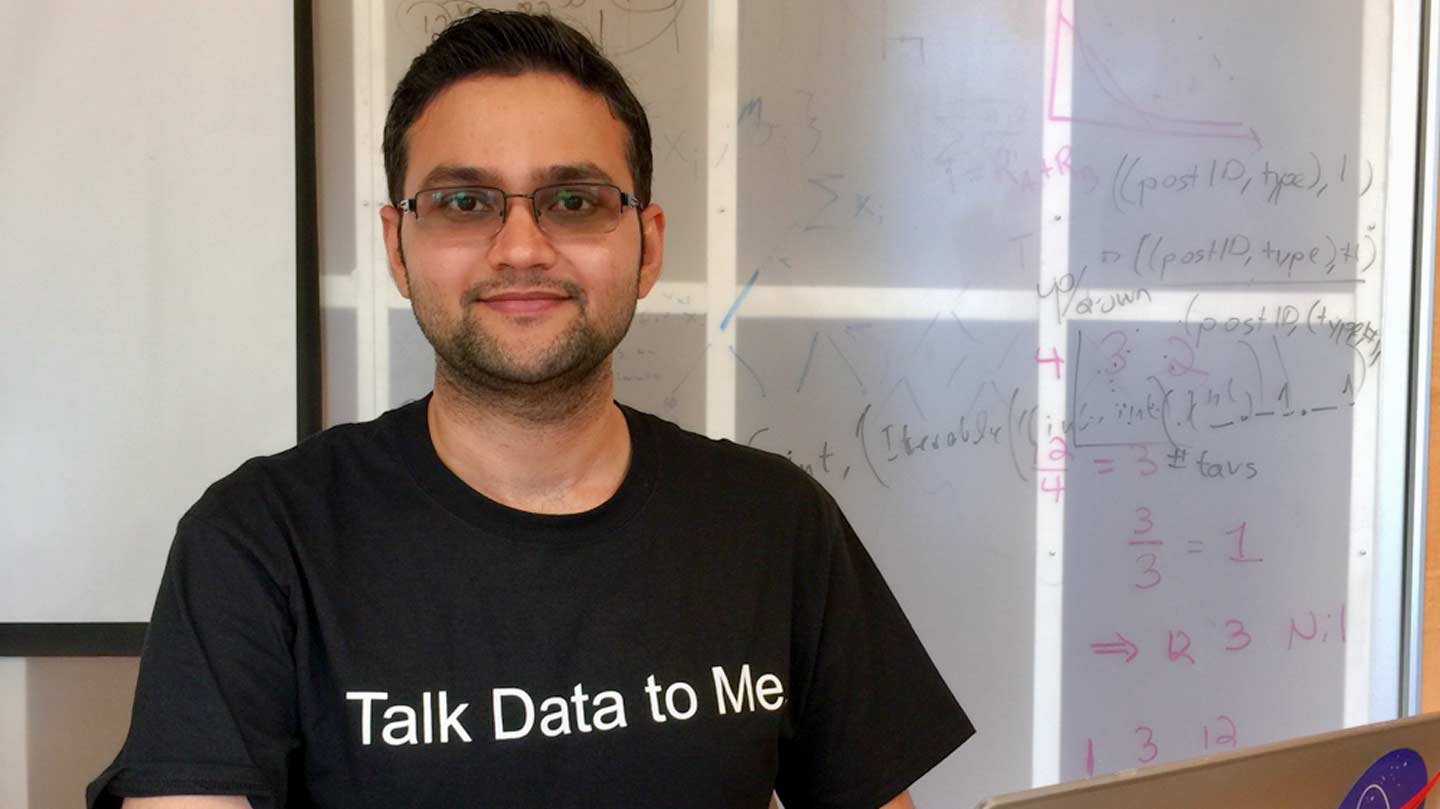
Sarthak Dasadia ('17 PhD Physics) a UAH post-doctoral researcher recently completed the prestigious "data science boot-camp," The Data Incubator.
Michael Mercier | UAH
Sarthak Dasadia ('17 PhD Physics) a post-doctoral researcher (Physicist and Data Scientist) at The University of Alabama in Huntsville (UAH) recently completed a prestigious data science fellowship, The Data Incubator (TDI) 2017.
TDI is a Cornell-funded intensive eight-week "data science boot-camp" for "Science, Technology, Engineering, Mathematics (STEM)" trained PhDs to become in-demand data scientists. The program has an acceptance rate of just two percent. For fellows admitted in the prestigious TDI program there is no tuition fee. Dasadia, who attended the program in New York also had the option to participate online.
"The Data Incubator program provides exposure to various data science and big data related tools and technologies," said Sarthak Dasadia. "Data science is one of the fastest growing fields, and many fields have benefited from it including astronomy and astrophysics. This research is where the world is going right now," he said.
Dasadia noted that Dr. Carol Strong, a lecturer in the UAH Physics Department encouraged all graduate students to apply for a TDI fellowship.
"A very special thank you goes to Dr. Strong for her teaching and encouragement to apply for this very prestigious fellowship opportunity. The program has a very low acceptance rate, making it one of the toughest programs in the country to get into…it's even tougher than Stanford," he said. "I learned various data science and machine learning techniques during this two month program. Also, I got to work with some of the smartest data scientists in the field—the person sitting next to me was the recipient of a Nobel Peace Prize."
Dasadia's doctoral research is based on his 2016 discovery of the second-strongest shock wave of observed galaxy clusters. His faculty advisor is Dr. Ming Sun, UAH Assistant Professor of Physics, who specializes in galaxy evolution and cosmology. Dasadia discovered the second strong shock in the joined galaxy cluster Abell 665 using observations from the Chandra X-ray Observatory.
"Sarthak is my first PhD student…he was very motivated to conduct research," said Dr. Sun. "Sarthak worked diligently to finish his PhD ahead of time. He has been a great asset to my galaxy research group. I am very happy that Sarthak rejected generous postdoctoral offers from The University of California Irvine, and The University of Utah to stay in my UAH research group," said Dr. Sun.
Dasadia's UAH academic achievements include investigation of shock waves produced by merger of galaxy clusters using NASA’s Chandra X-ray Observatory data; retrieved data from Chandra X-rays observatory data archive, and Sloan Digital Sky Survey database by sending SQL queries; improved data quality and reliability by building a proficient data cleaning algorithm which successfully identified and removed bad events; conducted 3D Monte Carlo simulations to accelerate model accuracy by 60 percent. His findings and conclusions were published in The Astrophysical Journal Letters (ApJL), recognized by NASA and featured in UAH publications.
Dasadia received numerous awards and honors while attending the UAH College of Science including the Outstanding Graduate Student for Spring Commencement 2017, Alabama Commission on Higher Education Graduate Research Fellowship, NASA EPSCoR GSRP Fellowship, First Place Prize in the Annual Von Braun Memorial Symposium Student Poster Competition and Gold Medal First Place in B.Sc (Physics) from The Maharaja Sayajirao University of Baroda (MSUB) in Vadodara Gujarat India.
Additionally, Dasadia is a highly accomplished photographer and some of his works can be seen here: 500px.com/sarthakdasadia.
He earned bachelor's and master's degrees in physics from MSUB (India). Dasadia also earned a master's degree from UAH in 2014, and under Dr. Sun's direction successfully defended his PhD dissertation in May, "Shocking Features in Merging Galaxy Clusters."
"I plan to apply the new tools and techniques I learned at TDI to astronomy," Dasadia said. "Machine learning — the science of teaching a machine to make smarter and automated decisions will open new doors. Today we are generating data at an astronomical rate. Big data tools and technologies have shown tremendous potential to uncover many unresolved mysteries."